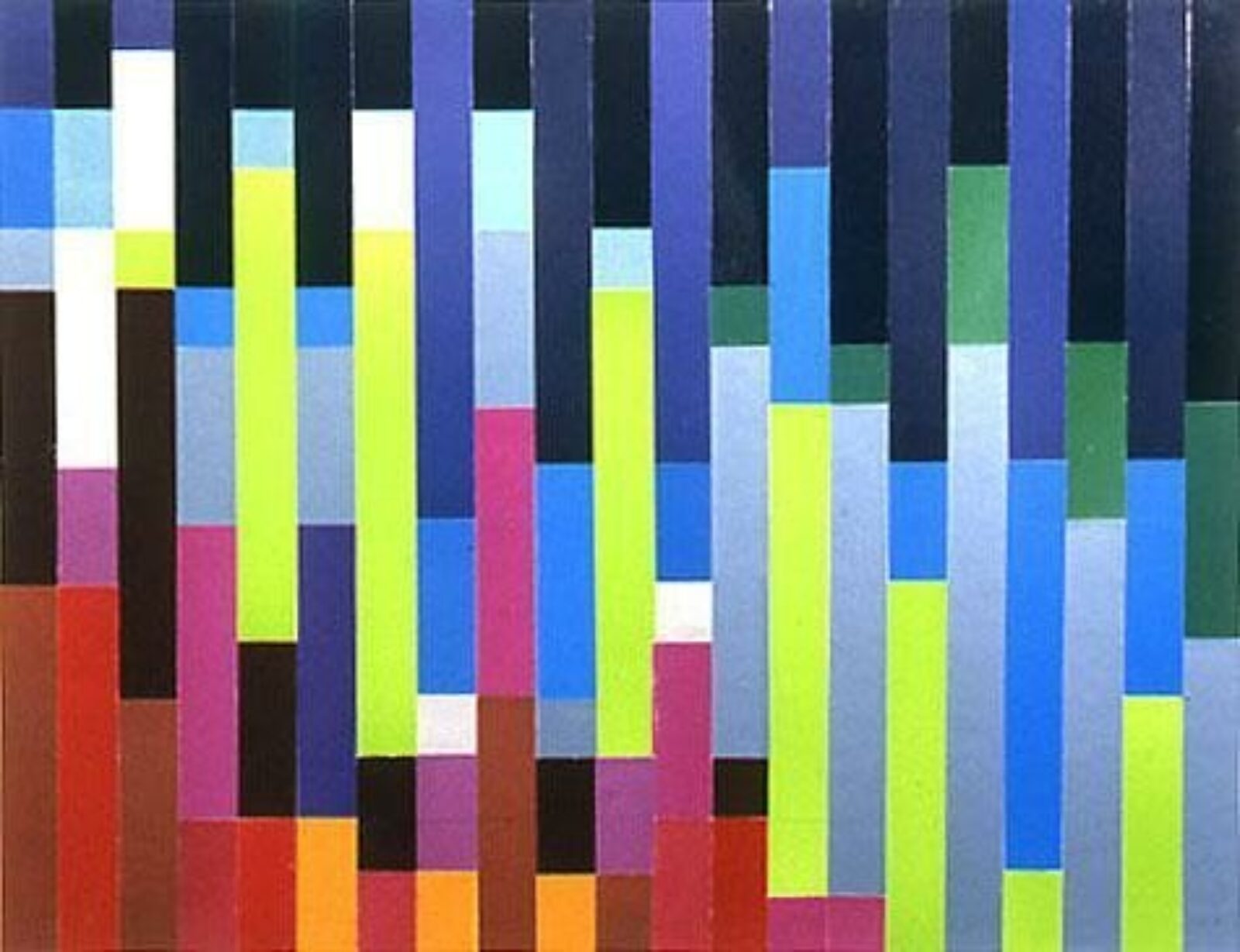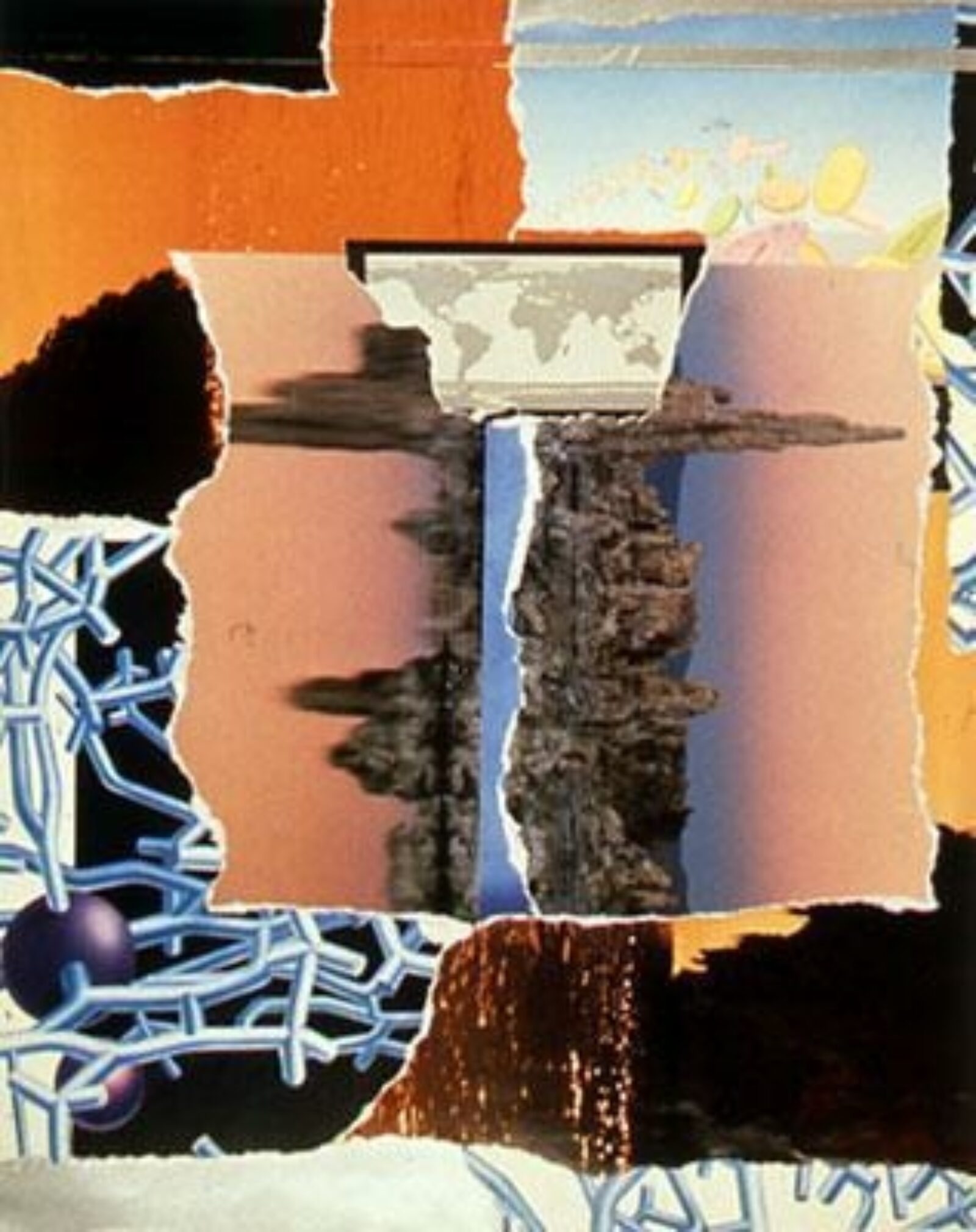











featured gallery for March 2010
The Pure Cut
So, with the help of my unknown lovers, I am going to write a story. My heroes are they, pasted on the wall, they and I who am [sic] here, locked up.
— Jean Genet, Our Lady of the Flowers
My personal history with collage began sometime during the midst of that highly protean and hormone-heavy period called adolescence when I began collecting images of men and pasting them into a small, black leather diary I had been given for my birthday. All manner of printed matter was game in my furtive pursuit of the male image -- sports magazines and mail order catalogues alike.
At that time, the total collaging process, the selecting of images, the cutting and pasting into my little book, seems to have been some outward act, a physical construction of my own identity, or at least what I thought and wanted it to be. It was a sense of self, based not in reaction to, but in hopeful assimilation of, common cultural archetypes.
As I grew older, collage became something used to express myself in a way very different from the actions in my youth. The drive was not located in some mimetic representation of cultural archetypes, but rather a wholly dialectical attempt to subvert them.
In an essay accompanying a catalogue on Michael Heizer, Germano Celant writes, "[t]o cut is to think, to cut is to sculpt (from the Greeksek, to cut), in the sense of intervening decisively into a given material." While Celant refers specifically to Heizer's Earthworks, the physical act he speaks could apply equally to any artist. The mark of a pencil, the daub of paint, or the cut of the scissor, all become decisive total interventions that mark a surface, penetrating the form. Thus, the cut has a meaningful effect in that it lays bare the very stratifications and inner structures not only of the material itself, but of some deeperpneuma -- the result, a psychic palimpsest extracted from the physical plane.
For artist Jose Luis Cortes, the cut could reference the very material on which he works, collage in this case being Cortes' use of pages fromThe New York Times both as a point of inspiration and actual canvas. A heavy, expressionistic hand paints upon the pages of the newspaper, images built upon each other in a dense, layered composition that reflects a certain reality of urban life. A dichotomy between the material and imagery, ephemeral and monumental, convey a fragility and grim factuality of life that no doubt was felt by many during the early years of the HIV/AIDS crisis. In Cortes' Liberty: The Wasteland II, from 1996, a marquee advertises a cinematic version of the famous T.S. Elliot poem by the same name. In the 90's, one could mistake Elliot's Wasteland for New York when he writes,
Unreal city,
Under the brown fog of a winter dawn,
A crowd flowed over London Bridge, so many,
I had not thought death had undone so many.
In his collages David King explores, as he notes, "spirituality, sexuality, familial relationships, and the myriad of emotions that arise" from them. In one particular series of images titled, Feats of Magic, figures appear to be manipulated by a pair of omniscient hands that in many ways reflect the manipulating actions of collage itself. King's collages open themselves up to discussion centering both on destiny and the individual will-to-power, profoundly examining the events that mold our lives and the myriad forces that come to bear upon our existence as human beings. Whether the hands are themselves a representation of divine intercession, or merely reflections of King's own providential acts, is an interesting question.
"The collection of images," Joe De Hoyos writes, "is as important to the work process as is the final composition on paper." The reclamation of images, the act of extracting them, presents in De Hoyos' collages a hyper-awareness of the cultural image and their saturation within our visual lives. The "aesthetic pollution" Paul Virilio speaks of becomes in these works the material for re-creation, the auratic reclaimed from the mechanical image. Like the dense grids and networks of the information age, De Hoyos' collages are reminiscent of pixilated monitors or cell pathology slides and, in the case of his Heaven, Hell and Earth image, the genetic code of our media age -- the television transmission pattern.
With Jason Deneault's collages, the very materiality of the paper, torn and ragged, act as documentation of its extraction, a record of the cleaving of paper from its source and ultimately an affirmation of the artist's existence. It would appear for Deneault, the very act of cutting, the rhythm of physical separation with his materials along with the ensuing tension of the found image upon the page all reflect his concurrent interest in dance. Whether with his body, or appropriated imagery, Deneault explores a realm that is immediately physical and imminently psychic.
From theses artists, as with those who operate within the same practice, what emerges from collage and its utilization of found imagery and materials is a dialectic, a creative tension between assimilation and resistance, ephemerality and permanence. Indeed, to perform the cut, to separate the image from its source, becomes an act not only of defiance, but also of creation. The very manipulation of such imagery, of culturally weighted matter, becomes a direct re-invention of the normative stereotypes around us, recasting the cultural currency of the printed age and establishing it within a wholly new visual language.
